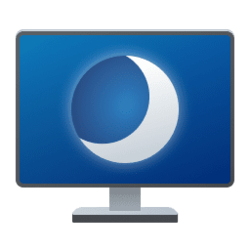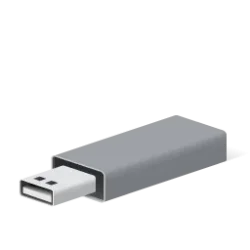This tutorial will show you how to change the default action to take when opening the lid of your laptop in Windows 10 and Windows 11.
The lid open wake action specifies the action to take when the system lid is opened when waking (resuming) from sleep, hibernate, or modern standby.
Users can specify one of the following lid open actions to take:
- Do Nothing = No action is taken when the system lid is opened.
- Turn on the display (default) = The OS turns on the display when the system lid is opened.
- Option One: Change Lid Open Action for Specific Power Plan in Advanced Power Options
- Option Two: Change Lid Open Action for Current Power Plan in Windows Terminal
- Option Three: Change Lid Open Action for Specific Power Plan in Windows Terminal
Change Lid Open Action for Specific Power Plan in Advanced Power Options
1 Open the Control Panel (icons view), and click/tap on the Power Options icon.
2 Click/tap on the Change plan settings link for the power plan (ex: "Balanced") you want to apply this to. (see screenshot below)
3 Click/tap on the Change advanced power settings link. (see screenshot below)
4 Expand open the Power buttons and lid and Lid open action settings. (see screenshot below step 5)
You can add Lid open action to Power Options if you do not have it available.
5 In both the On battery and Plugged in drop menus for the Lid open action setting, select Do nothing or Turn on the display (default) for what you want, and click/tap on OK.
Desktop computers will not have separate On battery and Plugged in options available unless it has a data connection to a UPS.
Change Lid Open Action for Current Power Plan in Windows Terminal
1 Open Windows Terminal, and select either Windows PowerShell or Command Prompt.
2 Copy and paste the command below you want to use for when on battery and/or plugged in into Windows Terminal, and press Enter.
powercfg -setdcvalueindex SCHEME_CURRENT 4f971e89-eebd-4455-a8de-9e59040e7347 99ff10e7-23b1-4c07-a9d1-5c3206d741b4 0powercfg -setdcvalueindex SCHEME_CURRENT 4f971e89-eebd-4455-a8de-9e59040e7347 99ff10e7-23b1-4c07-a9d1-5c3206d741b4 1You would use this option for a desktop computer, since desktop computers will not have separate On battery and Plugged in options available unless it has a data connection to a UPS.
powercfg -setacvalueindex SCHEME_CURRENT 4f971e89-eebd-4455-a8de-9e59040e7347 99ff10e7-23b1-4c07-a9d1-5c3206d741b4 0powercfg -setacvalueindex SCHEME_CURRENT 4f971e89-eebd-4455-a8de-9e59040e7347 99ff10e7-23b1-4c07-a9d1-5c3206d741b4 13 You can now close Windows Terminal if you like.
Change Lid Open Action for Specific Power Plan in Windows Terminal
1 Open Windows Terminal, and select either Windows PowerShell or Command Prompt.
2 Copy and paste the
powercfg /L command into the command prompt, and press Enter. Make note of the GUID number (ex: 381b4222-f694-41f0-9685-ff5bb260df2e) of the power plan (ex: "Balanced") you want to apply this to. (see screenshot below)The power plan (ex: Ultimate Performance) with an asterisk (*) to the right of it is your current active power plan scheme.
3 Type the command below you want to use for when on battery and/or plugged in into Windows Terminal, and press Enter.
powercfg -setdcvalueindex GUID 4f971e89-eebd-4455-a8de-9e59040e7347 99ff10e7-23b1-4c07-a9d1-5c3206d741b4 0powercfg -setdcvalueindex GUID 4f971e89-eebd-4455-a8de-9e59040e7347 99ff10e7-23b1-4c07-a9d1-5c3206d741b4 1You would use this option for a desktop computer, since desktop computers will not have separate On battery and Plugged in options available unless it has a data connection to a UPS.
powercfg -setacvalueindex GUID 4f971e89-eebd-4455-a8de-9e59040e7347 99ff10e7-23b1-4c07-a9d1-5c3206d741b4 0powercfg -setacvalueindex GUID 4f971e89-eebd-4455-a8de-9e59040e7347 99ff10e7-23b1-4c07-a9d1-5c3206d741b4 1Substitute GUID in the command above with the actual GUID from step 2 above for the power plan you want to apply this to.
For example: Set to "Do nothing" while "Plugged in" for the Balanced power plan GUID (381b4222-f694-41f0-9685-ff5bb260df2e)
powercfg -setacvalueindex 381b4222-f694-41f0-9685-ff5bb260df2e 4f971e89-eebd-4455-a8de-9e59040e7347 99ff10e7-23b1-4c07-a9d1-5c3206d741b4 0
4 You can now close Windows Terminal if you like.
That's it,
Shawn Brink













